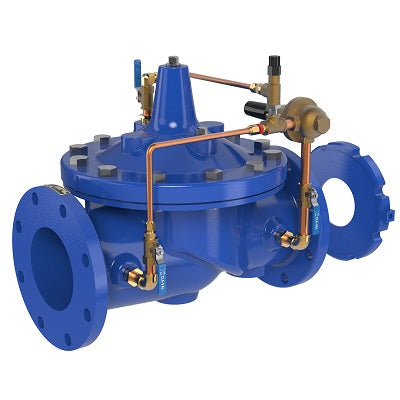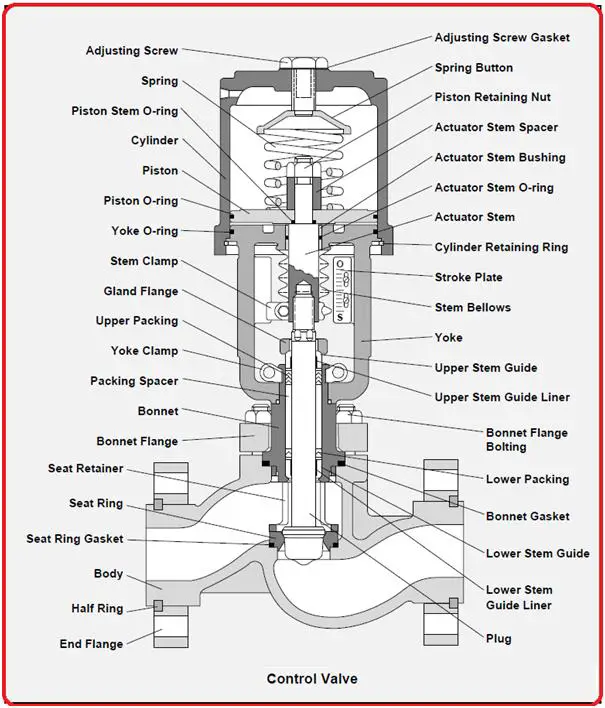The Function of Control Valves in Fluid Circulation Administration Solution
The Function of Control Valves in Fluid Circulation Administration Solution
Blog Article
Achieve Seamless Integration and Control With High Quality Structure Automation Controls
In the realm of modern structure monitoring, the significance of top quality structure automation controls can not be overstated. Embracing top quality structure automation controls is not just an issue of ease however a calculated critical for companies aiming to optimize their centers' performance and sustainability.

Development of Structure Automation Controls
Throughout the past couple of decades, the evolution of developing automation controls has substantially transformed the way structures are handled and run. Developing automation systems largely focused on basic features such as managing air, heating, and ventilation conditioning (HVAC) systems. As technology progressed, these controls have actually ended up being extra advanced, allowing for a broader range of structure systems to be integrated and handled centrally.
The evolution of developing automation controls has actually seen a change in the direction of more intelligent systems that can adapt to altering problems in real-time. This adaptability is vital for enhancing energy performance and making sure occupant comfort. Furthermore, modern-day structure automation controls currently offer functions such as anticipating upkeep, remote tracking, and data analytics, allowing center supervisors to make data-driven choices to improve building performance.

Advantages of Top Quality Assimilation
The innovation in building automation regulates in the direction of more intelligent systems has emphasized the substantial advantages of quality integration in maximizing building procedures and boosting total effectiveness. This centralized control additionally gives much better visibility and understandings into building efficiency, allowing positive maintenance and optimization strategies. Generally, the advantages of quality combination in structure automation controls are indisputable, supplying enhanced effectiveness, convenience, and operational performance.
Boosted Individual Experience and Availability
Enhancing individual interaction with building automation regulates with intuitive layout and improved access raises the total experience for passengers and center managers alike. By concentrating on individual experience, constructing automation systems can end up being extra reliable and user-friendly. Intuitive user interfaces, clear navigation, and adjustable setups empower individuals to connect with the controls easily and properly.
Access features play an important duty in guaranteeing that all people, including those with specials needs, can utilize the building automation manages with ease. Integrating features such as voice commands, tactile buttons, and color-contrasted display screens can enhance accessibility and make the controls a lot more inclusive.
Furthermore, enhanced customer experience brings about greater user complete satisfaction, boosted performance, and much better decision-making. Owners can change ecological settings according to their preferences, while facility managers can effectively handle and monitor structure systems - control valves. Generally, focusing on customer experience and ease of access in building automation regulates adds to a much more effective and seamless building setting for all stakeholders included
Lasting Practices Via Automation

In addition, automation can assist in the assimilation of renewable resource sources such as photovoltaic panels or wind turbines right into building operations. By instantly changing power usage based upon the accessibility of renewable resource, buildings can better decrease their reliance on non-renewable sources. This smooth integration of sustainable methods not just profits the environment her response however likewise boosts the overall functional performance and cost-effectiveness of the structure. With automation, structures can align with modern sustainability goals and add to a greener future.
Future Trends in Structure Control Solution
One noticeable trend forming the future of structure control systems is the enhanced integration of Artificial Intelligence (AI) and maker knowing. Furthermore, the Net of Points (IoT) is revolutionizing building control systems by linking sensing units and tools to boost and streamline operations effectiveness.
One more crucial pattern is the focus on cybersecurity procedures to shield versus possible threats to developing automation systems. As structures come to be more interconnected, guaranteeing durable cybersecurity methods will certainly be necessary to guard sensitive information and prevent unauthorized access.
In addition, the change in the direction of cloud-based systems is getting energy, enabling streamlined control and remote access to building systems. This helps with simpler monitoring, maintenance, and updates, boosting the total efficiency and versatility of building control systems. As innovation continues to advancement, these trends are expected to form the future landscape of structure automation controls, driving advancement and sustainability in the developed environment.
Final Thought
Finally, building automation controls have actually developed substantially, providing numerous advantages such as improved customer experience, availability, and sustainable practices. Quality assimilation plays a crucial function in achieving smooth control and effective operation of structure systems. Future fads in building control systems are likely to concentrate on more improving automation abilities for boosted energy performance and total performance. It is vital for structure proprietors and operators to focus on the adoption of top quality building automation controls to maximize structure operations and attain lasting sustainability objectives.
In the world of modern structure monitoring, the relevance of quality building automation controls can not be overemphasized. Overall, the development of structure automation controls continues to drive development pop over to this site in the building administration sector, offering new possibilities for producing smarter and a lot more lasting buildings.
The improvement in structure automation manages in the direction of even more smart systems has visit site emphasized the considerable benefits of high quality combination in optimizing structure operations and boosting total performance. Generally, prioritizing user experience and accessibility in structure automation manages contributes to a more smooth and productive structure environment for all stakeholders entailed.
It is essential for building proprietors and operators to focus on the fostering of top quality building automation controls to maximize building procedures and attain long-lasting sustainability goals. - control valves
Report this page